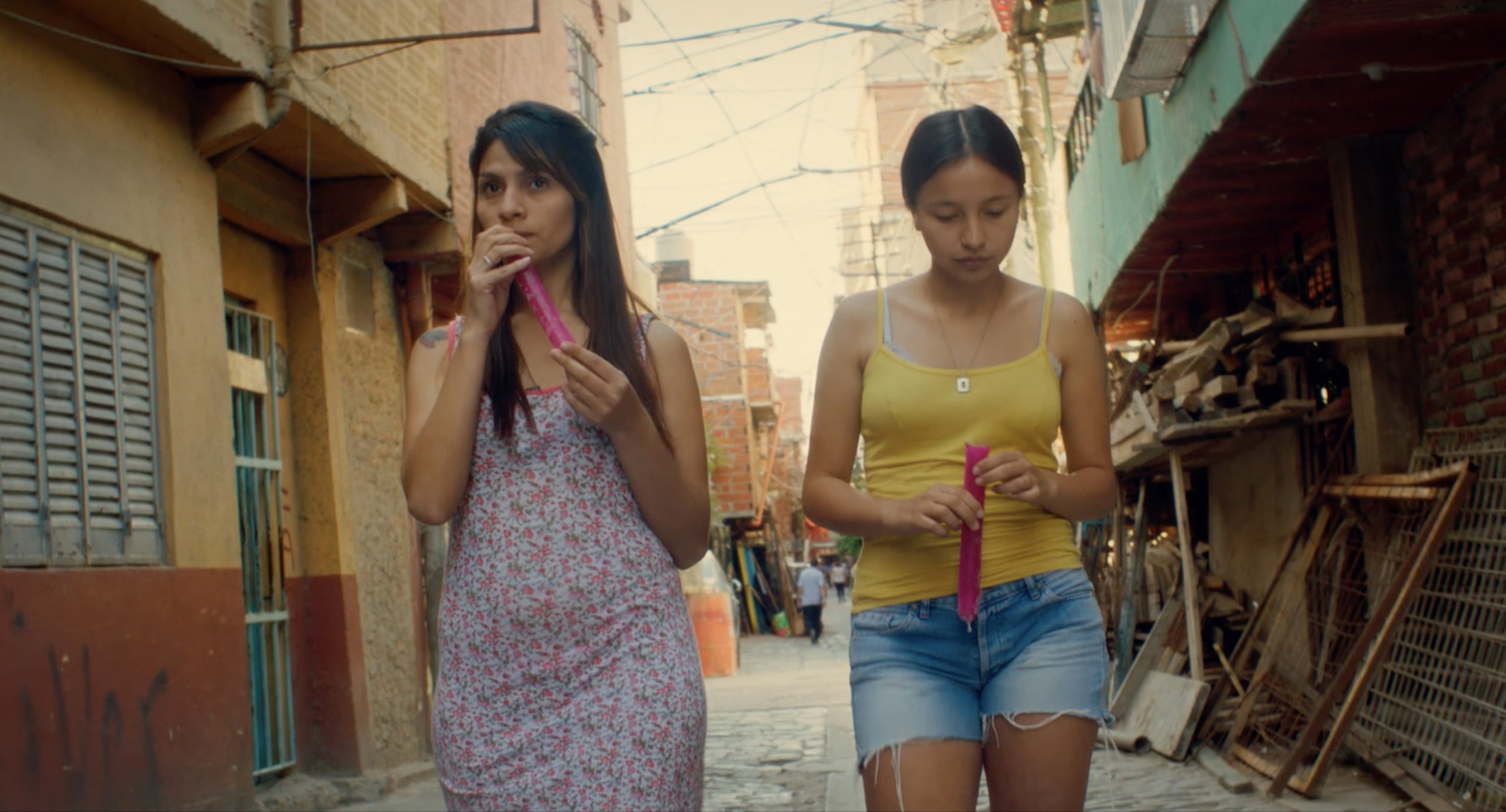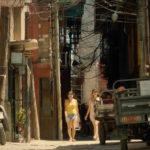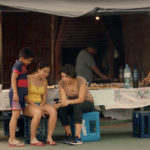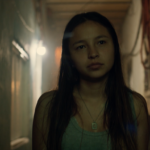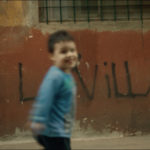- Technical Info / Información Técnica:
(2021) / 00:18:17 / ratio 1.85:1 / COLOR / Stereo / Camara Alexa Mini / 2K / 24 FPS / US-Argentina / Drama, Family, Social Issues, Migration, Inequalities
- Short Synopsis / Sinopsis Corta:
A teenage girl from a poor rural village in northern Argentina moves to a huge informal urban settlement in Buenos Aires and she must quickly adapt to this radically different urban environment.
- Synopsis / Sinopsis:
A teenage girl from a poor rural village in northern Argentina moves to Buenos Aires to pursue a life with more opportunities and the hopes of helping her family back home. Sharing a small room in a huge informal settlement with her older cousin’s family, she must quickly adapt to this radically different urban environment.
Una adolescente de pocos recursos llega del norte de Argentina para mudarse a la ciudad de Buenos Aires en busca de más oportunidades, con la esperanza de ayudar a su familia. Allí, se instala en un asentamiento informal y comparte un cuarto con la familia de su prima. Así, tendrá que adaptarse a un ambiente urbano radicalmente nuevo para ella.
- Director´s Biography / Biografía del Director:
A freelance editor and aspiring filmmaker from Seattle WA, Reed spent several years living in Buenos Aires working on a documentary film focused on urban issues. For over a year, he lived in the neighborhood where this film was shot and became integrated into the community.
- Director’s Statement / Declaraciones del Director:
This film is based on personal experiences and real-life situations and people, some of whom play themselves in the film. I spent three years in the neighborhood (an informal urban settlement) portrayed in the film. I also lived in the house for over a year that is used as the protagonist’s rental room in the film. In fact, the only way I was even able to make this film is because I had lived there and I am a friend with the family who owns the house, some of the tenants, as well as knowing the local community and neighbors who live on this street. All the characters who appear in the film are local residents and non-professional actors with the exception of the protagonist. The story for the film was inspired by a real teenage girl who lived across the street from my room at the time. I noticed her on several occasions gazing fixedly out the very same doorway Marisel gazes out of at the end of the film. I had spent a couple of years in this neighborhood at that point as well as various others in Buenos Aires and it was obvious to me that this girl had just moved from the countryside and had never seen an urban environment like that. As well, I’ve had various friends (both male and female) who explained to me the fear, uncertainty, and expectations to succeed they felt when they first moved to this neighborhood in their teens and 20’s. With this film, I hope to convey this fear and uncertainty of someone who has just arrived in this place to start a new life, as well as immerse the viewer in the daily life and culture of this “unique” urban environment. I write “unique” because although this type of neighborhood is foreign to North Americans, Europeans, and the middle/upper classes, it’s regular daily life for roughly a quarter of the world’s population. There have been various phases of rural-to-urban migration over the decades in the 20th and 21st centuries in Argentina and due to extreme levels of poverty – partly due to deforestation, mostly driven by large scale cattle and soy production in northern provinces such as Santiago Del Estero – there are still migrants arriving from these provinces for chances at a better life in Villa 31, located in the center of Buenos Aires. The opportunities the city provides as well as the strength of the communities in Villa 31 easily outweigh the precariousness of living in an informal settlement where there are higher levels of street crime and violence and where residents often face discrimination from the middle and upper classes of the city as well as the media.
Esta película se basa en experiencias personales y situaciones y personas de la vida real, algunas de las cuales se interpretan a sí mismas en la película. Pasé tres años en el barrio (un asentamiento urbano informal) retratado en la película. También viví en la casa durante más de un año que se utiliza como habitación de alquiler del protagonista en la película. De hecho, la única forma en que pude hacer esta película es porque había vivido allí y soy amigo de la familia propietaria de la casa, algunos de los inquilinos, además de conocer la comunidad local y los vecinos que viven en esta calle. Todos los personajes que aparecen en la película son residentes locales y actores no profesionales a excepción del protagonista. La historia de la película se inspiró en una adolescente real que vivía al otro lado de la calle de mi habitación en ese momento. La noté en varias ocasiones mirando fijamente por la misma puerta por la que mira Marisel al final de la película. Había pasado un par de años en este barrio en ese momento y en varios otros en Buenos Aires y era obvio para mí que esta chica se acababa de mudar del campo y nunca había visto un entorno urbano como ese. Además, he tenido varios amigos (tanto hombres como mujeres) que me explicaron el miedo, la incertidumbre y las expectativas de éxito que sentían cuando se mudaron por primera vez a este vecindario en su adolescencia y veinte años. Con esta película, espero transmitir este miedo e incertidumbre de alguien que acaba de llegar a este lugar para comenzar una nueva vida, así como sumergir al espectador en la vida cotidiana y la cultura de este entorno urbano “único”. Escribo «único» porque aunque este tipo de vecindario es ajeno a los norteamericanos, los europeos y las clases medias y altas, es la vida cotidiana de aproximadamente una cuarta parte de la población mundial. Ha habido varias fases de migración del campo a la ciudad durante las décadas de los siglos XX y XXI en Argentina y debido a los niveles extremos de pobreza, en parte debido a la deforestación, principalmente impulsada por la producción de soja y ganado a gran escala en las provincias del norte, como Santiago del Estero – Todavía hay migrantes que llegan de estas provincias en busca de oportunidades de una vida mejor en Villa 31, ubicada en el centro de Buenos Aires. Las oportunidades que brinda la ciudad, así como la fortaleza de las comunidades en Villa 31, fácilmente superan la precariedad de vivir en un asentamiento informal donde hay niveles más altos de delincuencia y violencia callejera y donde los residentes a menudo enfrentan discriminación de las clases media y alta de la población, así como los medios de comunicación.
- Overview / Ficha técnica:
Script / Guión: Reed Purvis
Producer / Producción: Reed Purvis
Executive Producer / Productor Ejecutivo: Marcelo Vitali
Director / Director: Reed Purvis
Director Assistant / Asistente de Dirección: Ramiro Gómez Bustamante
DoP / Dirección de Fotografía: Flavio Dragoset (ADF)
Camera / Cámara: Martin Goiri
Art Director / Dirección de Arte: Victoria Cachan (ADF)
Sound design / Diseño de sonido: José E. Caldararo (ASA)
Editing / Montaje: Reed Purvis
Cast / Elenco: Mónica Córdoba, Florencia Salas
- Festivals & Awards / Festivales, Premios y Nominaciones:
– 25 LA Shorts, International Film Festival; 07/2021; US
- Links:
Trailer: https://vimeo.com/522562373
Social Networks:
https://www.instagram.com/reedpurvis/
- Contact / Contacto:
Gisela Chicolino
FilmsToFestivals Distribution Agency
